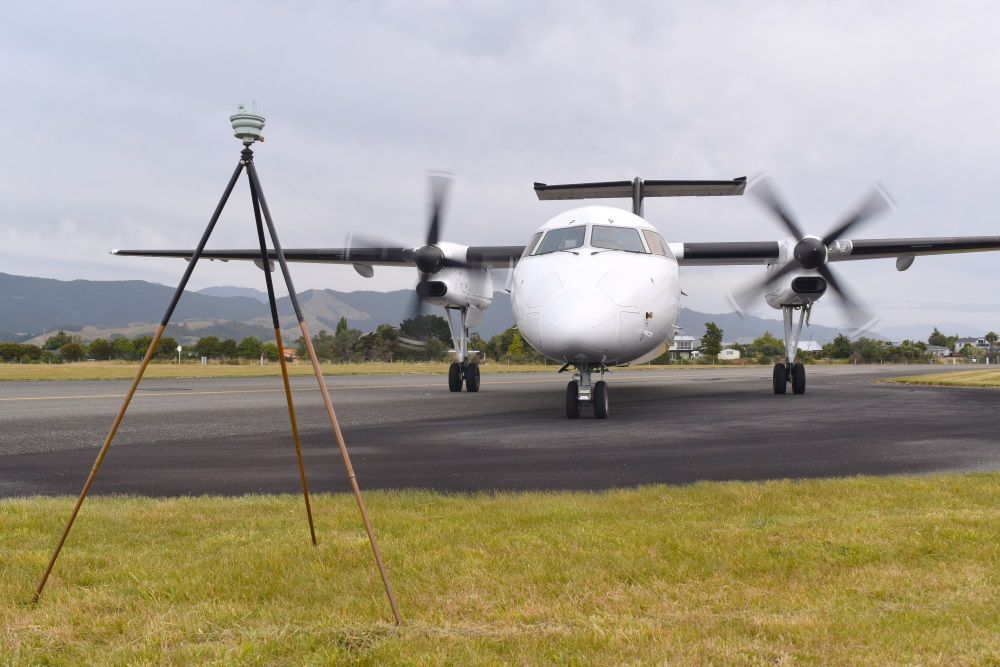|
|
Post by nuuumannn on Jan 11, 2017 15:40:12 GMT 12
|
|
|
|
Post by Dave Homewood on Jan 11, 2017 18:06:08 GMT 12
Great stuff, it's interesting to see this in action.
For those who are not entirely up with the play technically, would you mind detailing the process of what is done and what happens during the compass swing of an aeroplane?
|
|
|
|
Post by camtech on Jan 11, 2017 19:10:12 GMT 12
Dave, there are two methods.
The original and oldest method is to point the aircraft in the main cardinal (compass) points and, with a highly accurate compass compare the aircraft heading to the compass, then check the aircraft compass reading. Usually this is done on 4 main headings then the aircraft compass is either adjusted by magnets adjacent to the detector, or electronically. A calibration chart is made up to show the errors.
The other method (for larger aircraft with highly accurate compass systems) is to park the aircraft accurately on a north south heading (the aircraft is measured by plumb bobs hung below the aircraft). A calibration set is then connected to the aircraft compass system and the earths magnetic field is then "swung" electronically around the aircraft compass detector head (in a wingtip or on the tail plane). Errors are then identified and corrected electronically to a high degree of accuracy.
Standby (or emergency) compass swings are done while airborne, by comparing the main compass against the standby. Adjustable magnets in the standby unit are adjusted for accuracy.
I used to do compass swings on Hercules, Orion and Friendship aircraft with an electronic compass calibrator, but Andover, Freighter, Dakota and most other aircraft were swung by pilots and navigators, using a landing compass.
Hope that helps, Dave
|
|
|
|
Post by Dave Homewood on Jan 12, 2017 13:27:29 GMT 12
Thanks Les.
|
|
|
|
Post by nuuumannn on Jan 17, 2017 14:33:51 GMT 12
Hi Dave, just to add to Les' post above (sorry should have been back since I posted this) the way we do it with our aircraft is that there is a circular platform on the taxiway out to holding point Alpha 1 (taking off on RWY 02) at Nelson and we taxi the aircraft out and the man on the ground (me in this case) has a remote compass on a stand. Inside the aircraft, an avionicky engineer goes along to write down the calibration data and attaches a mysterious box full of stuff that only he can understand to the aircraft and he specifies where the aircraft is to point to align the compass. After a north/south line up, two rounds of calibration are normally done, around every 45 degrees, then every 30 degrees. I verify what the reading is on the compass with hand signals above or below or spot on the direction the aircraft is pointing in; it's all very low tech. All up the process can take in excess of two hours. I usually take a bag with a bottle of water, coat in case it rains, sun glasses and in this case, my camera. Obviously the taxiway is closed to traffic. We did this around 8pm. Here's the compass on its stand; I line the compass up with the aircraft's fin and nose undercarriage through the view finder on the compass.  Hope that helps. |
|
|
|
Post by Dave Homewood on Jan 17, 2017 16:42:35 GMT 12
Thanks.
|
|
|
|
Post by camtech on Jan 17, 2017 18:56:24 GMT 12
Adding some more to the complexities, the site where compass swings are carried out are usually surveyed to ensure there are no anomalies in the earth's magnetic field at that location. At Whenuapai and Wigram, the compass swing site is surveyed to a high degree of accuracy, usually to seconds of a degree, and a north south alignment line is surveyed and marked. When the aircraft is parked, it is set as close as possible to the marked line - plumb bobs hung from the aircraft belly. A deviation of even an inch from the line is included in the calculations. A swing on an Orion or Friendship can take up to 6 hours if there are problems with the correcting process.
|
|
|
|
Post by scrooge on Jan 17, 2017 19:55:02 GMT 12
Our aircraft were swung at CHCH only. Apparently there is nowhere suitable at Auckland.
|
|
|
|
Post by planecrazy on Feb 5, 2017 11:02:25 GMT 12
Like that last shot with the blurred effect.
|
|

